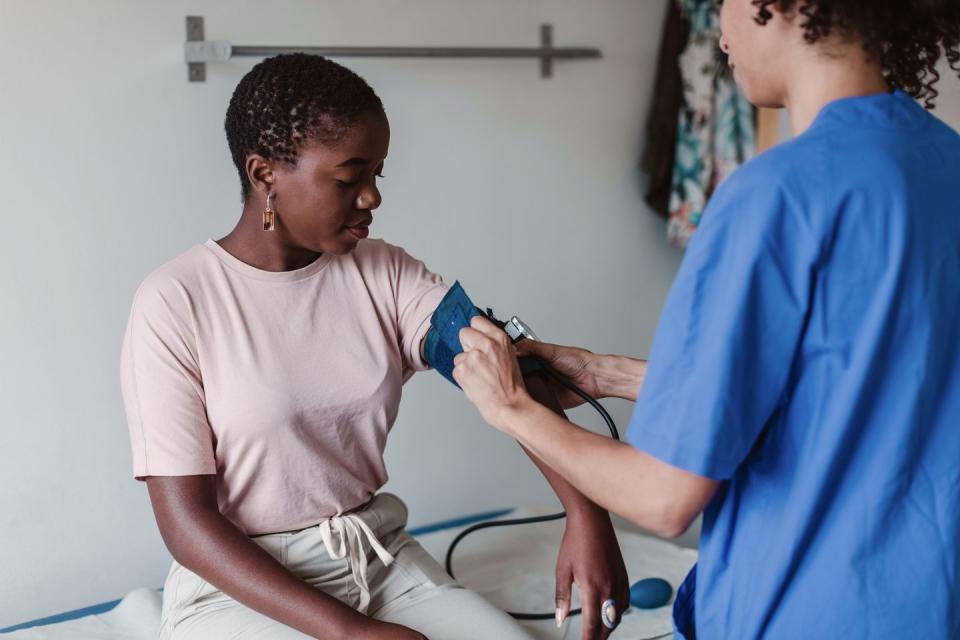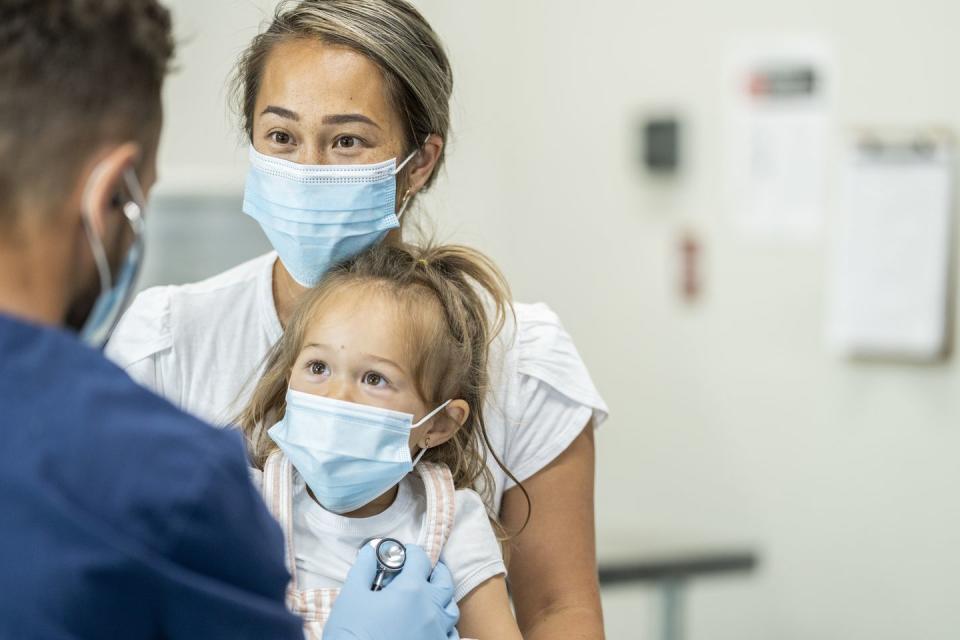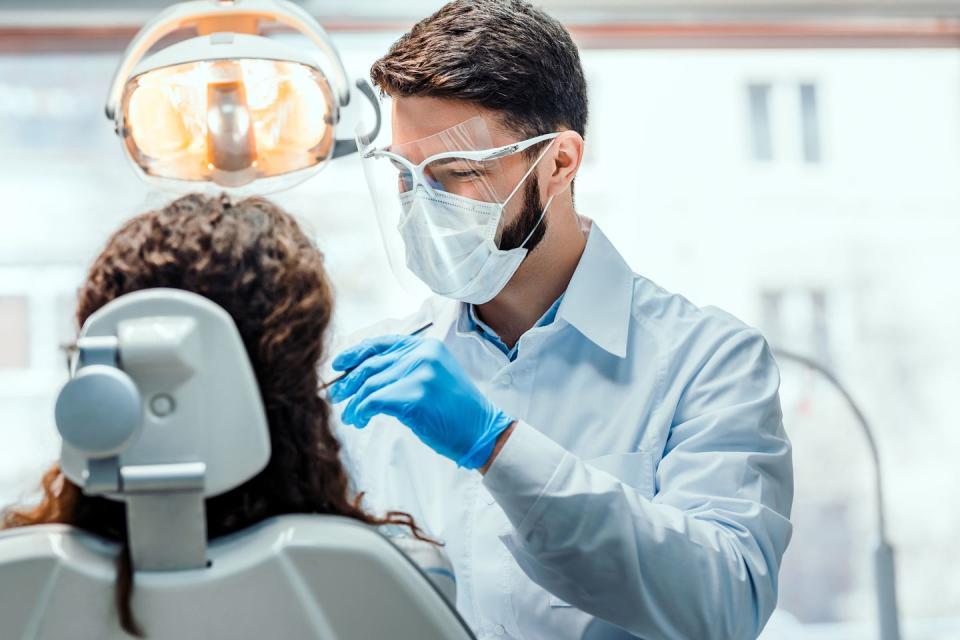6 Kinds of Doctor’s Appointments You Should Always Keep—Even Now

When the COVID-19 pandemic began, everyone canceled everything—including doctor’s appointments. But as weeks turned into months with no end date in sight, it became imperative to rethink our priorities. “Outside of truly elective things like cosmetic surgery, health care isn’t intended to be optional,” says George Ralls, M.D., the senior vice president and chief medical officer at Orlando Health, a healthcare system in central Florida. “It’s designed to catch things early and help reduce long-term consequences.” The big takeaway? “You are actually putting yourself more at risk by postponing care,” he says.
And while you may feel nervous about going, you should find comfort in all the preventive measures doctors are taking. “There are probably relatively few places as safe as a doctor’s office,” says Steven Rothschild, M.D., professor and chair of the department of family medicine at Rush University Medical Center in Chicago. “It’s the one place where everyone is compulsive about wearing masks and washing hands. It’s much safer than going to your local grocery store.”
Keep reading to find out why certain appointments are crucial to keep—and which ones can be done just as well virtually now that COVID-19 is surging again.
1. Cancer Screenings
Between mid-March and mid-June, breast, colon, and cervical cancer screenings were down more than 60 percent from where they were expected to be based on prior years. This trend worries a lot of physicians. “You can put a screening off for a month or two, but delaying them longer can mean something that could have been picked up early turns into a real problem,” says Dr. Ralls. “And you can’t really do things like mammograms or colonoscopies virtually.”
2. Chronic Condition Management

Many chronic conditions (including high blood pressure, diabetes, or rheumatoid arthritis) require routine doctor’s visits to catch potential red flags and ensure treatments are still working. That said, virtual appointments may be a good alternative when it comes to certain chronic conditions. To make sure you’re doing what’s best for your specific situation, make sure to ask your doctor which type of appointment is best for you to schedule.
“If, for example, you have uncomplicated hypertension, are up to date on screenings, and have an electronic blood pressure cuff at home, you can easily forward the results to your doctor and do that visit virtually,” says Dr. Rothschild. For something like rheumatoid arthritis, it can go either way. “If you aren’t in pain or inflamed and haven’t lost any function, your rheumatologist might be able to talk to you virtually, give you a refill on your medications, and see you in person in three or six months,” says Dr. Rothschild. “But if you have a new pain somewhere or aren’t able to function because of the pain, your doctor may want to see you in person and reassess.”
3. Annual Physicals
Annual physicals check everything from blood pressure and kidney function to your heartbeat and cholesterol levels, meaning your doctor might be able to catch something like an irregular heartbeat long before it turns into an issue that requires hospitalization. “We can suggest lifestyle modifications or treatments that might be able to help,” says Dr. Ralls. “Wait longer, and issues get harder and more complicated to manage.”
Many women tend to use their annual gynecologist visit as their primary yearly physical. While most appointments should be done in person, you might be able to do these virtually if you’re all caught up on screenings and simply need, say, a refill on birth control pills. Your doctor will be able to look at your chart and determine if going virtual can work for you.
4. Pediatrician Appointments

From birth to age two, children have regular pediatric visits, which are spaced out according to the American Academy of Pediatrics guidelines. And these shouldn’t be delayed. “Well child checks often involve immunizations and checking a child’s growth and development,” says Dr. Rothschild. “You really need to lay eyes on that child to do them well.” For example, the pediatrician can see if your child is interacting with other people appropriately for his or her age and how well they communicate their needs way better in person than over the internet.
5. Prenatal Care
Pregnant women are at an increased risk for getting seriously ill with COVID-19, which may explain some women’s desire to skip potential exposure in a doctor’s office. But these appointments are crucial for making sure the fetus is developing properly. “There are a lot of things happening during pregnancy that can affect the health of the baby and the mom,” says Dr. Ralls. “What you get out of these visits far outweighs the risk.” Because so many important tests are conducted during these visits—for things like high blood pressure, blood glucose levels, and fetal heartbeat—they really need to be done in person.
6. Dental Cleanings

You might think it’s no big deal to push back your routine trip to see your dentist—after all, you brush and floss twice a day!—but the health of your teeth actually indicates a lot more than you’d think. And it’s an appointment that really needs to be done in person. “Like other types of preventive healthcare, oral care heads off problems that can become more serious if neglected, such as gingivitis and gum disease,” says Dr. Ralls. “This is even more important for those with chronic conditions, such as diabetes or heart trouble.” What’s the connection between your mouth and overall health? Having diabetes raises your risk of gum disease, while having poor oral health raises your risk for heart disease and stroke. On top of that, dentists screen for oral cancers, which kill more than 10,000 people in the U.S. every year.
You Might Also Like

